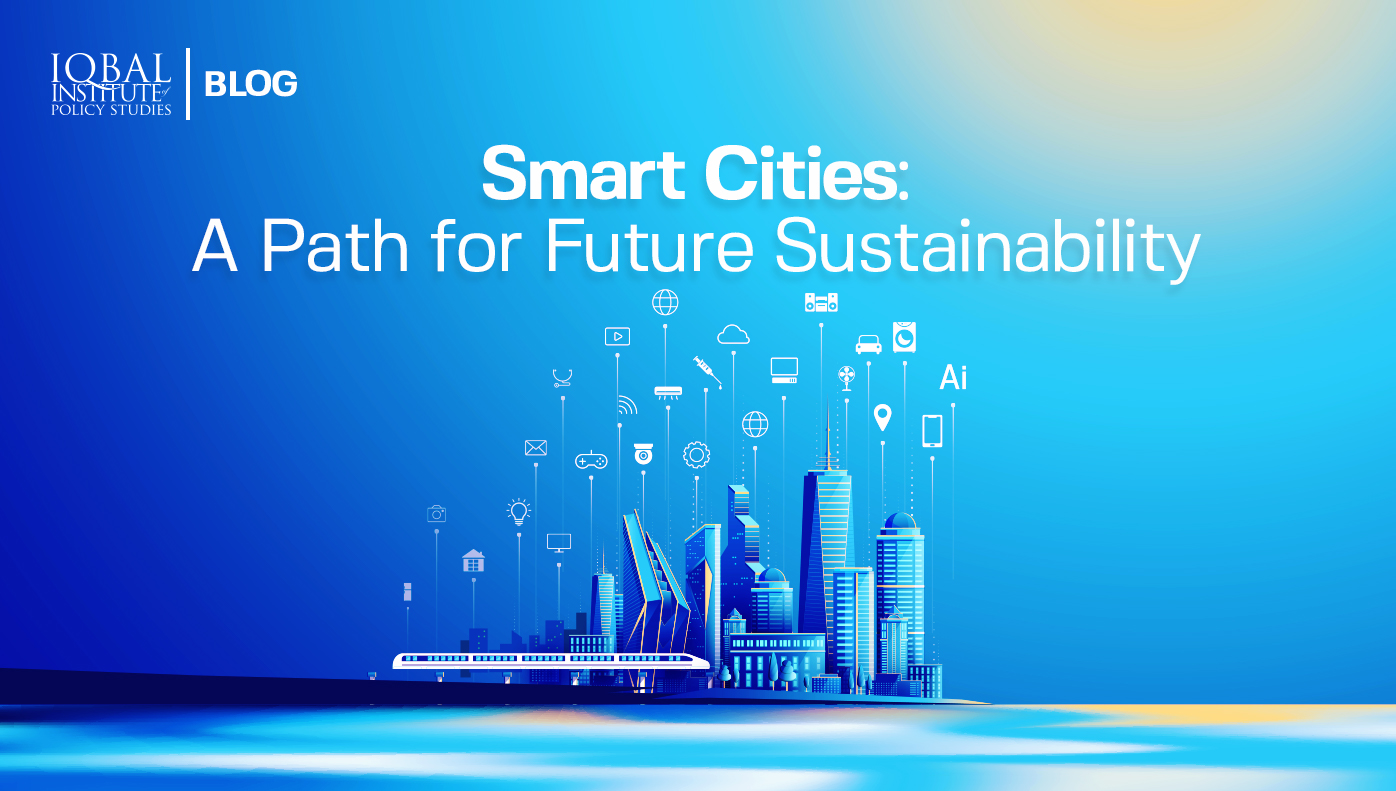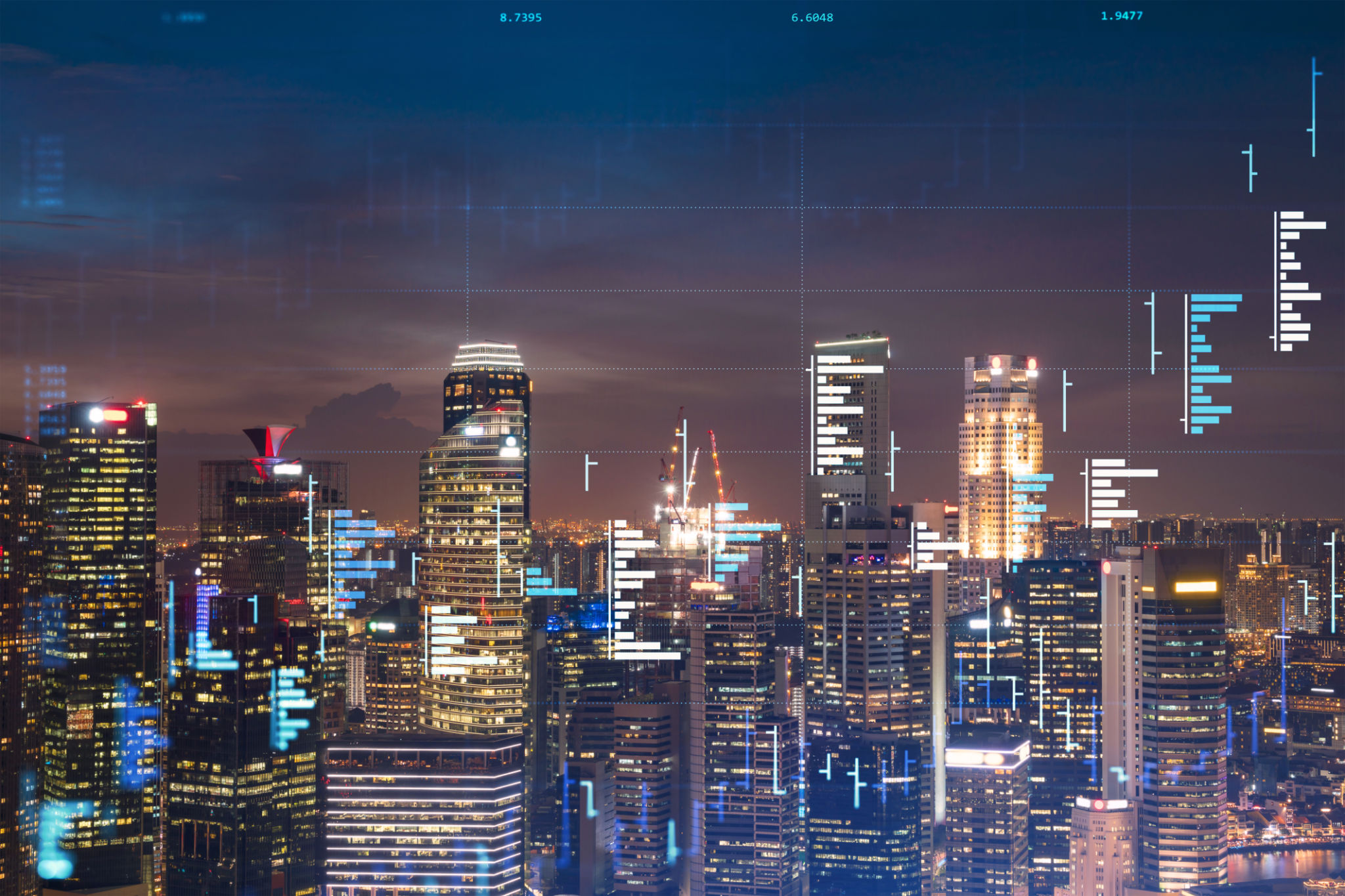
Introduction
City leaders have always thought that smart technologies are tools that remain effective behind the scenes. But as technology is being injected more directly into the lives of residents, more and more leaders are starting to realise that smart-city strategies start with the people, not the technology. This blog presents the concept of smart cities and how they can impact the sustainability of cities in the future.
As cities continue to grow and face challenges of urbanisation such as water management, sanitation, transportation, health, education, and land management, information and communication technologies can greatly improve the quality of life. The world is rapidly progressing with technological advances such as Internet of Things (IoT) devices which can be integrated into building structures and devices to monitor and collect data. Using data analytics and Artificial Intelligence, this data can be used to gain insights into human behaviour and manage resources accordingly. This will not only optimise energy, water management, transportation, and security; it will also have a positive environmental impact by reducing the carbon footprint due to the introduction of renewable energy systems. Pakistan produces twenty thousand plus IT graduates each year and offers a domestic market of over $200 million. More than 700 tech startups have been registered since 2010, of which 70 per cent are functional to date (Salman Zara, 2020). Therefore, Pakistan has the potential to integrate smart technologies in existing cities and create new cities to better cope with the challenges of urbanisation.
What is a Smart City
In the last several years, there has been an explosive growth in Information and Communication Technologies (ICT) due to advancements in hardware and software designs. Use of ICT in cities in various forms increases the effectiveness of city operations, and such cities are often labelled as digital city, flexicity, information city, eco-city, sustainable city, and smart city. Smart City is still a concept, and there remains no clear and consistent definition of the concept among academia and practitioners (Mohanty, 2016). Smart cities aim to improve the quality of urban services. It is a framework designed to address the growing challenges of urbanisation. Data from citizens and mechanical devices is used to monitor and manage traffic and transport systems, power plants, water supply networks, and waste disposal systems (Thales, 2020). Cellular and low-power wide area networks are being utilised by governments to connect and improve infrastructure efficiency, convenience, and quality of life for the residents. In simpler terms, a smart city translates digital technology into better public services for the general public and better use of resources for reduced environmental impact.

Why Smart Cities are Becoming Necessary
Components and Attributes of Smart Cities
There is a combination of components which make a city smart. A city may not have all the components as its number depends on the cost and available technology. A smart city’s components include smart infrastructure, smart buildings, smart transportation, smart energy, smart healthcare, smart technology, smart governance, smart education, and smart citizens. Attributes of smart cities include sustainability, quality of life, urbanisation, and smartness. The smartness of a city is described as the ambition to improve the city’s inhabitants’ economic and social standards. Sustainability is linked to infrastructure and governance, whereas the quality of life can be measured in terms of citizens’ emotional and financial well-being. There are four themes central to a smart city, namely, society, economy, environment, and governance. The society theme signifies that the city is to serve its inhabitants and citizens of the state. The economy theme focuses on continuous job growth and economic stimulus. The environment theme projects if the city will sustain its four functions and remain operational for future generations. Lastly, the governance theme suggests that the city is robust in its administration and policymaking and implementation.
Conclusion
Making a city smart does not only involve the introduction of technologies, but it is also a robust exercise which encompasses almost all components of an urban settlement. Smart technologies can be introduced in infrastructure, buildings, transport, energy, healthcare, education, and governance. This not only makes the use of resources efficient; it also adds to the sustainability of the city. Pakistan has a booming technology sector with thousands of graduates joining the market each year. This talent and human resource is capable of innovating and introducing smart technologies in different sectors.
Bibliography
Mohanty, S. P. (2016). Everything you wanted to know about smart cities. IEEE Consumer electronics magazine. Retrieved from https://www.researchgate.net/publication/306046857_Everything_You_Wanted_to_Know_About_Smart_Cities?enrichId=rgreq-c27331135b1caa52591ce7c6a74ca2e8-XXX&enrichSource=Y292ZXJQYWdlOzMwNjA0Njg1NztBUzo1NDc5NDk1MDA0NzMzNDRAMTUwNzY1Mjc0OTcyMg%3D%3D&el=1_x_3&_esc
Salman Zara, S. H. (2020). Bringing Pakistan’s Technology Sector to the Forefront. Retrieved from Pakistan’s Growth Story: https://pakistangrowthstory.org/2020/03/02/bringing-pakistans-technology-sector-to-the-forefront/
Thales. (2020). Secure, sustainable smart cities and the IoT. Retrieved from Thales: https://www.thalesgroup.com/en/markets/digital-identity-and-security/iot/inspired/smart-cities
The World Bank. (2020). Urban Development. Retrieved from The World Bank: https://www.worldbank.org/en/topic/urbandevelopment/overview
United Nations. (2018). 68% of the world population projected to live in urban areas by 2050, says UN. Retrieved from United Nations : https://www.un.org/development/desa/en/news/population/2018-revision-of-world-urbanization-prospects.html#:~:text=News-,68%25%20of%20the%20world%20population%20projected%20to%20live%20in,areas%20by%202050%2C%20says%20UN&text=Today%2C%2055%25%20of%20the%20
Research Questions
1. What is a smart city?
2. Why are smart cities the way forward for sustainability?
3. What are the components and attributes of smart cities?
[/fancy_box][fancy_box box_style=”color_box_basic” icon_family=”fontawesome” image_url=”7085″ box_color_opacity=”1″ box_alignment=”left” border_radius=”default” image_loading=”default” icon_fontawesome=”fa fa-envelope-open” icon_size=”60″]
Key Takeaways
1. As cities continue to grow and face challenges of urbanisation such as water management, sanitation, transportation, health, education, and land management, information and communication technologies can greatly improve the quality of life.
2. Using data analytics and Artificial Intelligence, data can be used to gain insights into human behaviour and manage resources accordingly.
3. Pakistan produces twenty thousand plus IT graduates each year and offers a domestic market of over $200 million.
4. More than 700 tech startups have been registered since 2010, of which 70 percent are functional to date.
5. Smart City is still a concept, and there remains no clear and consistent definition of the concept among academia and practitioners.
6. A smart city translates digital technology into better public services for the general public and better use of resources for reduced environmental impact.
7. Smart cities not only mitigate the problems emerging from rapid urbanisation and population growth; they also help elevate the standard of living and comfort.
8. Smart cities can reduce energy consumption, water consumption, carbon emissions, transportation requirements, and city waste.
9. There are four themes central to a smart city, namely, society, economy, environment, and governance.
[/fancy_box]

Leave a Reply